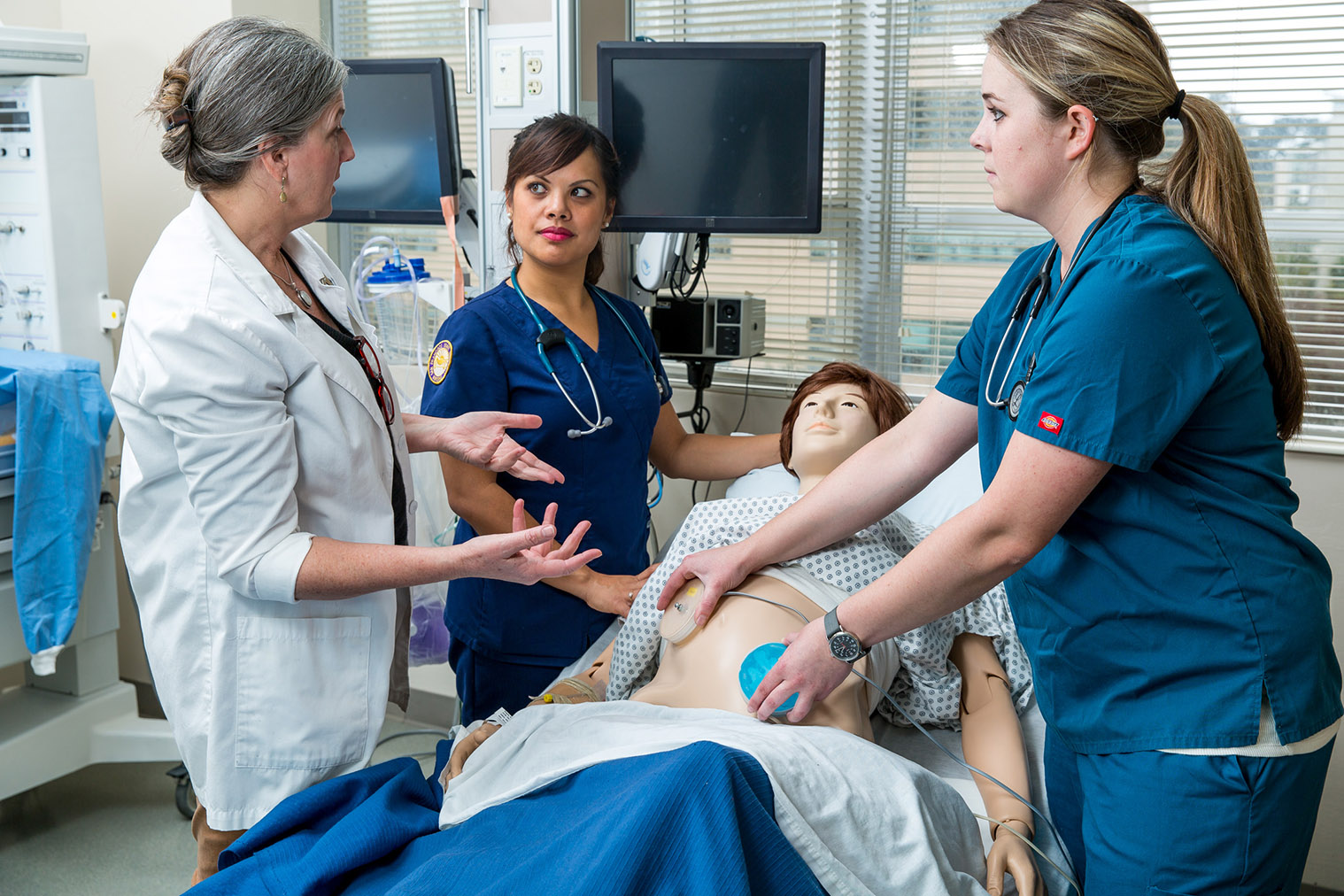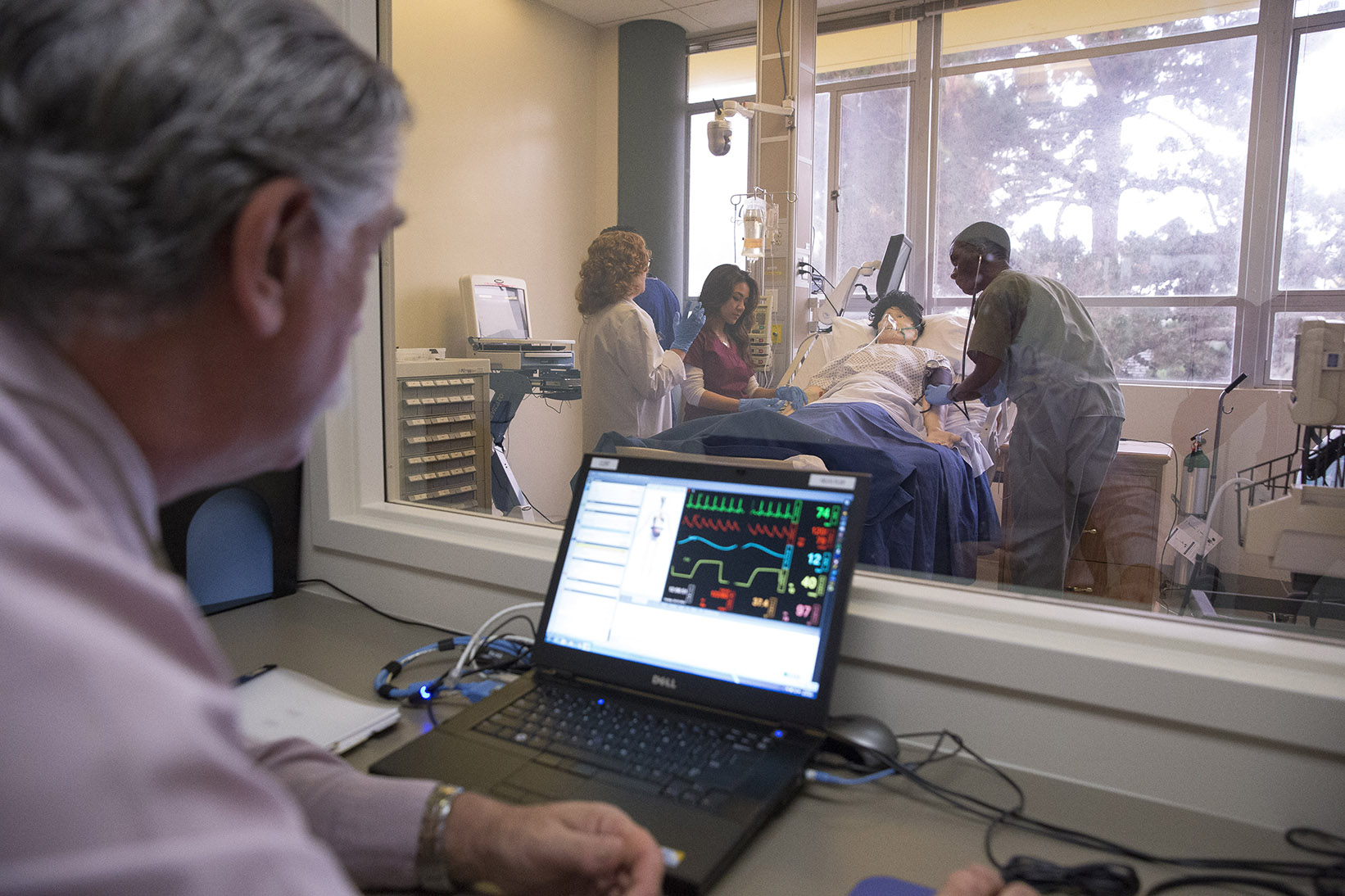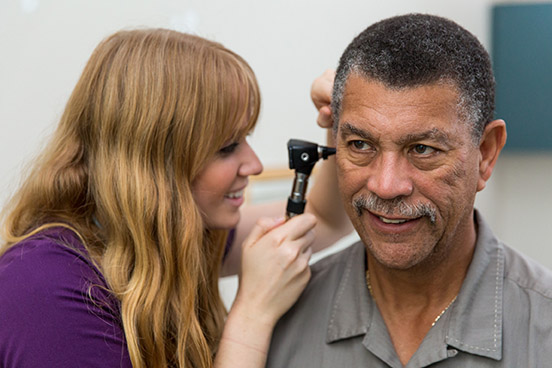Simulation Brings Training to Life

“Simulation is a technique, not a technology, to replace or amplify real experiences with guided experiences, often immersive in nature, that evoke or replicate substantial aspects of the real world in a fully interactive fashion.” (Gaba, 2004)
When you’re a kid, playing sick is something you do to get out of school. But at SF State, playing sick is something certain people do in school all the time. It's not a way to get out of classes, either. It's how the School of Nursing helps students develop the diagnosis and communication skills they'll need on the job. This is accomplished using high-tech computerized mannequins as well as standardized patients.
Computerized human patient simulators

SF State’s School of Nursing utilizes six computerized mannequin “patients,” which are set up in a simulated hospital complex on Burk Hall's third floor.
The “patients” can range in age from neonate to adult, and can be assigned names and medical histories, along with anatomically correct features like a pulse, specific pupil responses, a voice, and even artificial blood. They respond to the “nursing care” provided by students and to “medications” in a physiologically correct manner, for example, with blood pressure changes or seizures. Real medical equipment like IV pumps, hospital beds and crash carts add to the reality of the simulation activities.
Jill Saberman, MSN NP RN/simulation coordinator and Ed Rovera, simulation health educator and technology specialist, play major roles in planning and executing the human patient simulator experiences. Jill and Ed work with many faculty and staff members to schedule, coordinate and execute the complex scenarios. They use props, costumes, and makeup to create a real patient experience using the computerized patient simulators. “The team is really dedicated to the quality or the simulation activities and is constantly improving as needed,” stated Kathleen Shea, director of simulation.
Instructors are hidden behind one-way mirrors in order to evaluate student performance without being physically present at the “bedside.” These high-fidelity simulation labs are an effective way for nurses to practice the skills needed to manage complex, high-acuity patients; drill for emergency preparedness; or practice teamwork and collaboration with other providers.
Standardized patients

In addition to the computerized patients, all SF State nursing students interact with standardized patients — actors who've been trained to simulate various ailments and social situations. While using standardized patients to teach students isn't rare, the complexity and realism of the School of Nursing scenarios is. Betty Grandis, a standardized patient trainer and School of Nursing lecturer who received her Master of Arts degree in drama from SF State in 1999, directs the scenarios using traditional theatre language and techniques.
“The stories possess an arc and adhere to a theatrical structure,” Betty said. “The characters have fully developed lives and backgrounds to bring realism and depth to the scenarios.”
In one four-hour training exercise, for instance, the students begin by treating an elderly man for tuberculosis but, over the course of six simulated home visits, come to realize that his wife is showing symptoms of dementia. In another four-hour training, students interact with a teenage girl as she first seeks out contraception, then needs counseling for a sexually transmitted infection, then eventually has to deal with pregnancy and intimate partner violence.
According to Betty, about two dozen standardized patients/actors bring the trainings to life each semester. Their stage: rooms in SF State's Burk Hall that have been set-dressed to look like a home and a clinic. The rooms are equipped with cameras and microphones, so while one set of students is interacting with standardized patients, others are watching from down the hall while they wait their turn.
Once a scenario concludes, students receive feedback from the actor who played the patient. He or she steps out of character to critique the students’ communication skills, professionalism, empathy and rapport building.
"In the real world, nursing students might not have a chance to actually talk to their patients about these things," Betty said. “This gives them a chance to get valuable feedback while practicing their skills in a risk-free environment.”
The School of Nursing’s standardized patient training module was launched in 2010 and, according to Kathleen, translates patient care to the simulated setting, which brings excitement and realism to patient care in a psychologically safe environment for students.